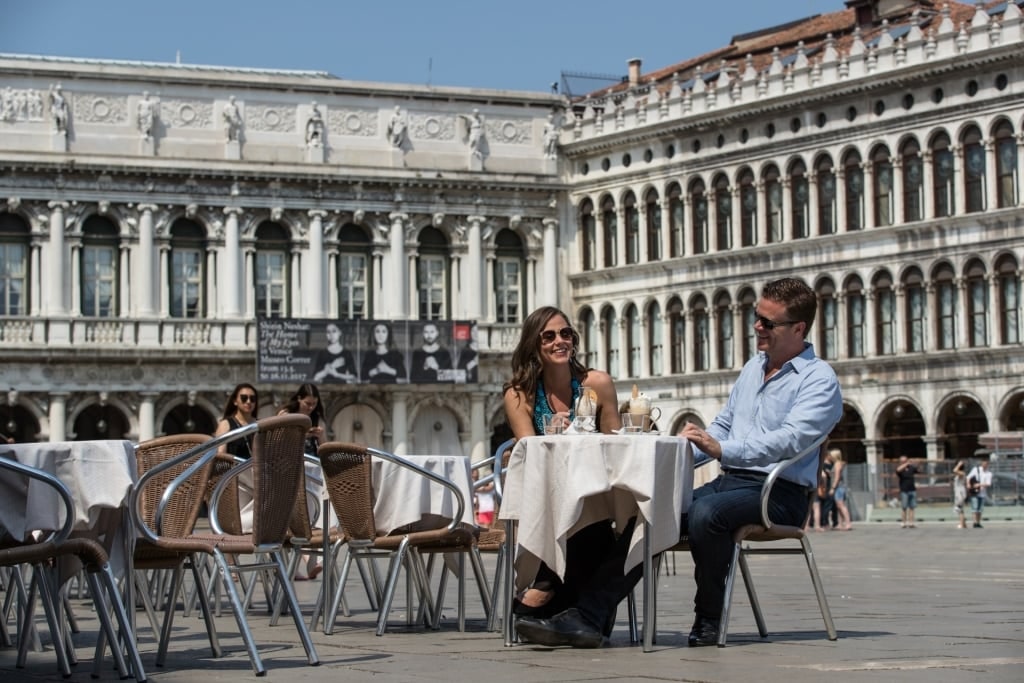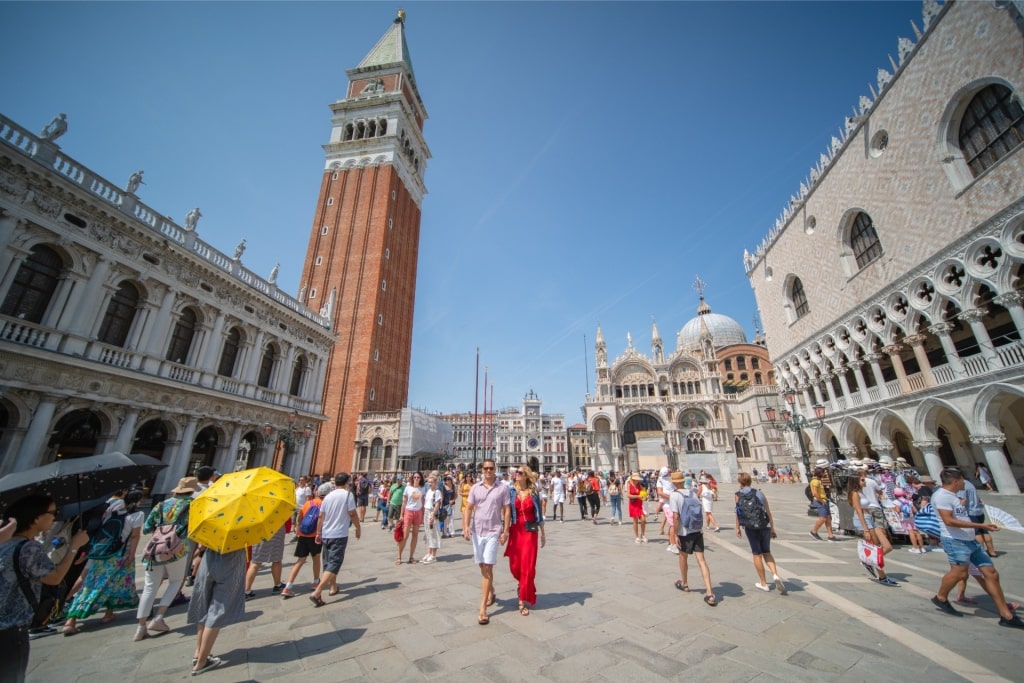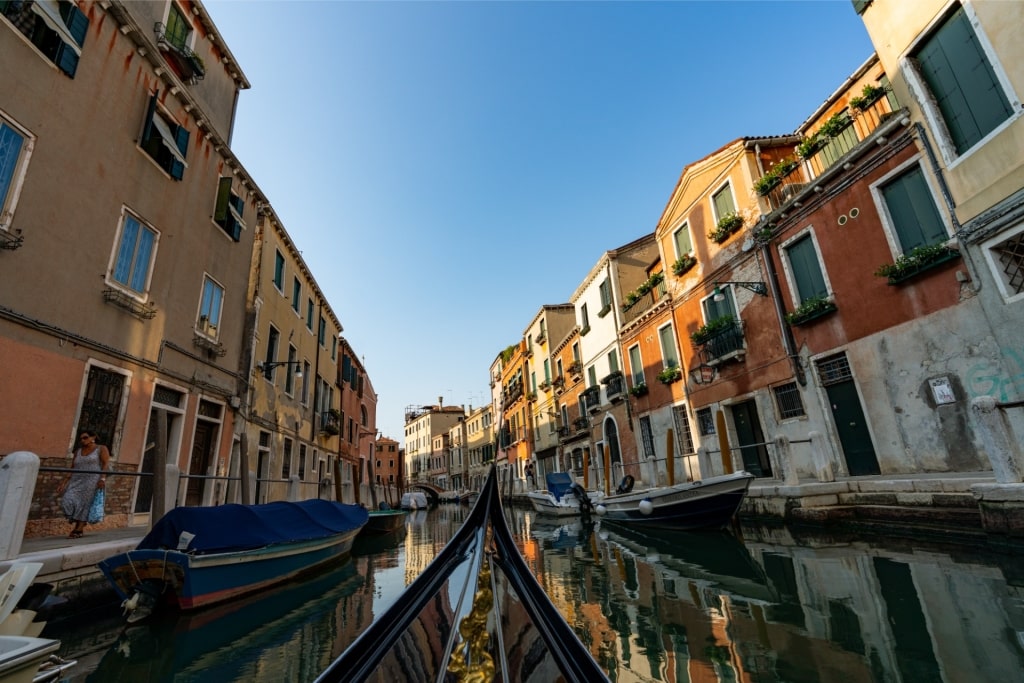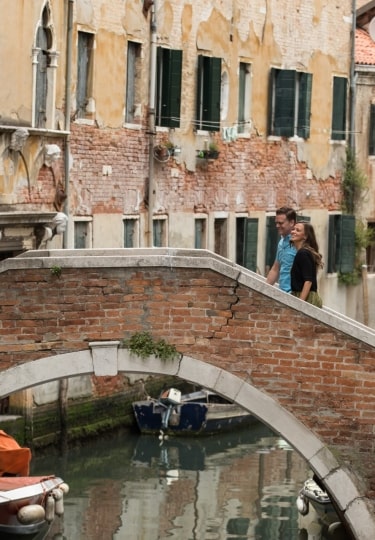The best time to visit Venice is outside the sultry summer peak season during spring or fall. You’ll find fewer crowds and lower humidity then.
Venice is a year-round destination, special in every season. Summer brings hot sunshine, trips to the islands in the lagoon, and outdoor dining. Fall brings atmospheric mists and fewer crowds. Winter is a time of celebration during the famous Carnival, while the cooler days of spring are perfect for exploring museums and galleries.
Venice lies on the northeast of the Italian peninsula, suspended over a wide, shallow lagoon on 118 islands. To the west lies the vast floodplain of the river Po and to the north, the Alps. As such, the climate is continental, with hot, often humid summers and cool, wet winters.
Visiting Venice By Season
Summer

Burano
Summer is peak season in Venice, and the city is undeniably busy. Expect average daily highs of 84°F (28.9°C) in July and August, the hottest months, and around 2.6 inches (65mm) of rainfall. Humidity can be high.
Rain is distributed fairly evenly throughout the year, and in summer, can come in the form of dramatic thundery showers. June, statistically speaking, has more rainfall than any other month, averaging 3.1 inches (80mm). However, June, along with July and August, are the sunniest months.
Pace yourself during summer in Italy. Cool off in the air conditioning of museums, relax in a canalside café with a gelato, and head out onto the lagoon, cooled by breezes, to visit Murano and Burano islands. Just don’t swim in the canals, which is strictly forbidden.
Fall
Fall is a wonderful time to go to Venice. The summer crowds have thinned out a little, and by October, the markets are full of seasonal produce, including chestnuts and truffles. Temperatures are dropping; the average high in September is 67.1°F (19.5°C), falling to 49.1°F (9.5°C) by November. There’s a slight increase in rainfall, with an average of three inches (75mm) in October.
Two cooling winds—the scirocco from the southeast and the bora from the east—may be noticeable. The bora contributes to the effect of acqua alta, or high tide. At these times, you’ll see temporary wooden walkways crossing St. Mark’s Square and locals in rain boots. The sight of the famous square completely submerged is intriguing for a visitor, although regarded as a nuisance by locals.
Winter
Winters in Venice are cool but relatively dry. The average high in January is 46°F (7.6°C), although the temperature rarely drops below freezing, and if snow does fall, it’s usually a light covering. Frost, and sometimes fog, which simply adds to the romance, are possible.
February brings the pre-Lenten Carnival that Venice is famous for, with masked balls and general festivity, whatever the weather.
Spring

St. Mark’s Square
Spring is the best time to go to Venice. In March and April, you may still encounter gray skies, the occasional mist, and the cooling effect of the bora wind, but the reality is that Venice looks beautiful and photogenic in any weather.
By May, average highs are around 72°F (22.3°C) with the possibility of rainfall on an average of eight days. By now, locals are enjoying outdoor dining. Spring also brings the opening of the Biennale, the city’s famous celebration of art and architecture, which takes place every two years and runs until November.
When Is Rainy Season?
Venice doesn’t have a rainy season, as such; rainfall is fairly evenly distributed throughout the year. April, September, and October have slightly higher rainfall than most other months, but June is statistically the wettest time, with an average of 3.1 inches (80mm) of rain and nine days on which rain falls.
During the winter months, rain may fall as very light snow and the mornings may be frosty. Either makes the beautiful city even more atmospheric.
When Is High Season?

St. Mark’s Square
July and August are peak season in Venice, when the city is busy with tourists, most of them day trippers from along the coast of Italy. St. Mark’s Square and areas like the Rialto Bridge will be crowded. But the great joy of Venice is that you only have to wander a few blocks away from the main areas to find peaceful squares and silent canals.
August and September bring glamorous cultural events, too. The famous Venice Film Festival takes place at the end of August, while the first Sunday in September brings the Regatta Storica, a spectacularly colorful rowing race.
When Is Shoulder Season?
Shoulder season in Venice is the spring and the fall, either side of the summer crowds, when the weather is cooler. This is the best time to visit Venice, when the compact city is under less pressure. There are some entertaining cultural events to see, including the Feast of San Marco in April, and the Vogalonga rowing race in May, which draws big crowds.
May also brings the somewhat eclectic Violet Artichoke Festival, when you’ll see artichokes, grown on Sant’ Erasmo island in the lagoon, on every menu.
When Is Low Season?
The low season months in Venice are November, when temperatures start to drop significantly and the Christmas festivities have yet to begin, and January, squeezed between Christmas and Carnival. Visit then and you’ll have plenty of space.
Read: One Day in Venice

Gondola ride
Are you ready to discover the beauty of Venice? Browse Venice cruises and plan your European adventure.



